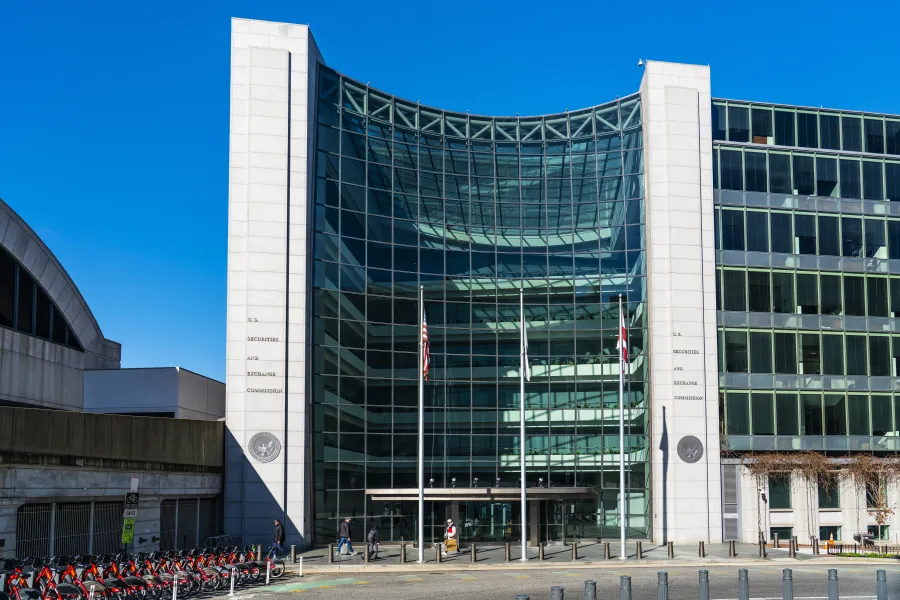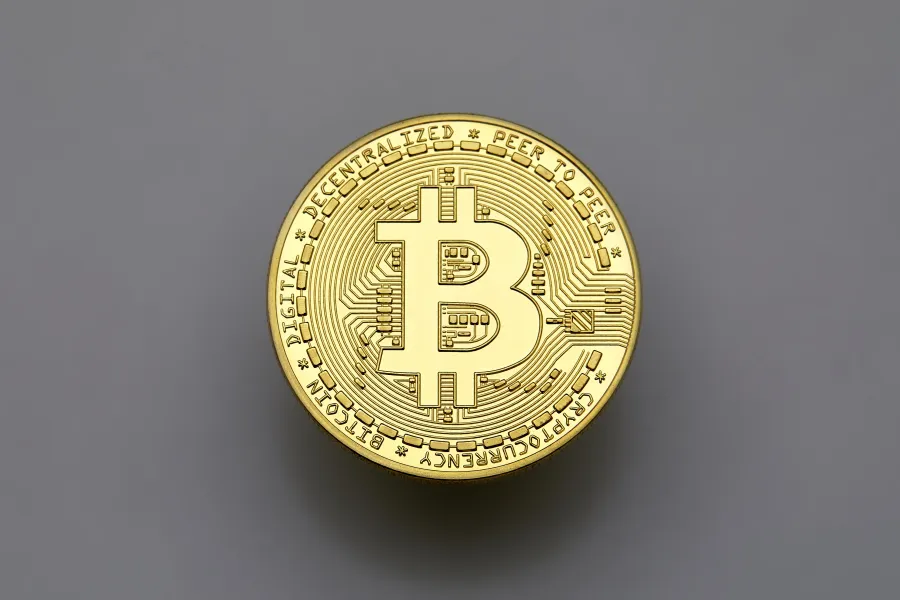Sneaky passage targeting crypto in US’ latest infrastructure bill
This week, our blockchain experts assessed the following topics:
- Sneaky passage targeting crypto in US’ latest infrastructure bill
- How to properly create trust around Stablecoins
- Will the implementation of EIP 1559 benefit Ether but hurt Ethereum’s ecosystem?
- A historical incident that paved the way for Bitcoin
- Market Update: Bitcoin taking on 50k, while hacker returns funds in DeFi’s biggest hack so far
Our bi-weekly Crypto Industry Report provides you with valuable information on the global crypto industry – picked and analysed by our blockchain experts.
Sneaky passage targeting crypto in US’ latest infrastructure bill
Washington is finally talking about Bitcoin – but most likely not in a way most crypto enthusiasts welcome it. Cause for discussion was a major political project in the form of a 1$ trillion infrastructure bill, which the Biden administration has had in its sights since taking office. This bill seeks to fund both infrastructure maintenance and new initiatives like electric vehicle charging stations. Payment for the bill is projected to come from additional taxes including money raised through expanding crypto tax reporting requirements.
What caught the eye of crypto aficionados was not so much the expansion of reporting requirements but the very broad definition of the term “broker” in the 2702-page bill. According to experts, the definition chosen was set so broad that all sorts of crypto industry participants like software developers, node operators or validators could fall within the scope of these new law. This could potentially be damaging for these actors as they would be required to carry or report transaction information they don’t even have or are able to acquire.
In no time, the crypto community raised awareness and got multiple politicians to bring forth different amendments to the bill. Former presidential candidate Ted Cruz even called to remove all crypto wording from the bill. By claiming that the US government has set out to regulate and tax something they don’t even understand, the notorious senator found support among some of the crypto people.
In the end, none of the discussions and proposals to change the bill helped. Even a wildly supported compromise amendment did not pass the required unanimous vote because 87-year old senator by Richard Shelby voted against it. While the bill now moves to the house of representatives, the broad definition of the term “broker” is still in it. Although, the Treasury Department is said to have stated that the definition will not encompass software developers, node operators or validators, some remain skeptical. Some even speculate, that the broad wording has been intentionally put into the bill as a way to give an unelected entity like the Treasury to exert more influence over crypto. Other consider the loss a victory since the once fringe-dwelling crypto community all of a sudden finds itself legitimised and taken seriously – a development, which can only be good for crypto in the long-term.
How to properly create trust around Stablecoins
The combined market capitalisation of stablecoins is getting bigger and bigger. While the number stood at around 36 billion USD in January of this year, we have now reached a total market cap of about 120 billion USD for all stablecoins.
With this growth in market capitalisation, more and more people are pushing for clarity around the different stablecoins’ backing. While regular audits are yet missing, some stablecoin issuers have brought forth attestation reports, in which third-party auditing firms verify the information provided by the issuers without thoroughly looking into the accounts and risks associated with the issuer.
Dubious investments scaled down
Some transparency is obviously better than none. The more frequently and accurately stablecoin issuers report on their reserves, the better clients and users can assess the risks and perils when it comes to using a specific stablecoin. As is seen with Tether’s latest attestation, its reserves have already improved since last time. When it shared its notorious pie chart in March 24% of Tether’s investments were held in assets of dubious quality such as secured loans, corporate bonds or funds. These investments have been scaled down to 15%, while the biggest stablecoin issuer’s allocation to Treasury Bills increased from just 3% to 24%.
So even though stablecoin issuers are putting in efforts to prove that they are well-funded, it still remains hard to properly compare separate stablecoin issuers to each other. Because there is no standardisation in what needs to be disclosed, the entirety of these attestation reports are not really useful.
Regulatory requirements for issuers are to be defined
As regulators are making up their mind on how to properly regulate stablecoins, we do see different approaches. In the EU an upfront regulation of e-money (targeting stablecoins also) is chosen due to non-existing payments regulatory starting point, whereas the US approaches stablecoin regulation on the basis of already existing competencies and law. Ultimately, a proper regulation’s goal will be to finalise regulatory requirements for any single stablecoin issuer as well as include the macro-economic stability perspective that is relevant to avoid financial instability within the bigger financial system.
Will the implementation of EIP 1559 benefit Ether but hurt Ethereum’s ecosystem?
One of the most awaited Ethereum updates was finally implemented on August 5 with the London hard fork. Generally known as EIP-1559, this Ethereum Improvement Proposal did alter the way transactions are priced, leading to a more user-friendly setup.
At its core, the update removed what is called the first-price auction mechanism as the main gas fee calculation method. With this mechanism, people willing to transact on Ethereum bid a set amount of money to pay for their transaction – the higher the bid, the higher the change to have one’s transaction processed.
Tipping mechanism for faster transactions
Now that this first-price auction is gone, Ethereum features a base gas fee that changes depending on how many transactions are waiting to be carried out. If the network’s utilisation is greater than 50%, the base fee is pushed up. With a network utilisation of less tan 50%, the case fee decreases instead. This sort of mechanism works because EIP 1559 has implemented a dynamic and customisable block size that grows or shrinks based on demand. Users that still want to have their transaction prioritised can include a tip that incentivised a miner to provide faster transaction inclusion.
Deflation in progress?
While the tip goes to the miner, the base fee is burned by the Ethereum protocol. So far with a little more than two weeks into the upgrade more than 60,000 ETH have been burned already. This creates an interesting dynamic – a potentially deflationary one. As a matter of fact, deflationary blocks have already been mined, meaning that such a block burned more ether than releasing new ones. Although the entire network is not deflationary yet, especially with the transition Ethereum 2.0’s proof of stake, this could become a reality.
This might obviously benefit Ethereum’s native token but what about NFTs, DeFi token and Ethereum’s digital economy at large? Some ask the eligible question: Why would you hold a DeFi token when the base money ether earns higher dividends? As could be argued by looking at history, a deflationary force has always provided a big challenge for any economy.
A historical incident that paved the way for Bitcoin
What historical incident happened in 1971 that is not much talked about but can be seen as decisive for Bitcoin? No it’s not the birth of Elon Musk. August 15th marked the 50-year anniversary of the closing of the so-called Gold Window. Up until 1971, foreign governments had their currency pegged to the dollar, while the dollar itself was pegged to gold. During what was called the Bretton Wood System, foreign government were able to redeem dollars for gold $35 per ounce.
This redeemability was eventually cut by president Richard Nixon when he announced on TV to “temporarily” suspend gold redemption. While he blamed his action on speculators attacking the dollar, the actual cause seems to have been foreign governments pushing for gold redemption of their dollar stack because they feared that the Federal Reserve’s money printing to pay for the Vietnam War and the Great Society programs would lead to dollar devaluation.
Bitcoin mining capacity is predictable
To this day, gold redemption has not been restored and the temporary policy measure seems to have become permanent. The launch of Bitcoin in 2009 can been seen as a reaction to this historic U-turn. Bitcoin’s monetary policy is fixed and perfectly predictable, while the Fed’s only constraints are political and subjective and no longer tied to any objective anchor like gold.
Because monetary expansion was totally cut loose, many within the Bitcoin community argue that society at large has taken a turn for the worse. Even newly turned Bitcoin flag bearers like Twitter CEO Jack Dorsey are trying to raise awareness when it comes to the happenings of 1971. As proof, they point to statistics showing that the worsening of things like productivity or wage growth perfectly coincides with the dollar’s decoupling from gold back in 1971. While it is undeniable that unprecedented monetary expansion plays its role, it’s also a dangerous endeavour to monocausally link complex developments to one variable.
Market Update: Bitcoin taking on 50k, while hacker returns funds in DeFi’s biggest hack so far
In the last few days Bitcoin has taken multiple attempts at breaking its resistance towards $50,000. Having gone past the 44,7k resistance, some traders were expecting that the bears could call it the quits. But so far, bears haven’t given in and although Bitcoin held support near $44,000 on August 18th, price action started to cool off a little. A pullback to 40k USD would be a healthy sign, as indicated by people on Twitter. The question is: If everyone is hoping for $40’000, the price might not actually go as low in the short-term.
So, while over a 30-day period, bitcoin is up 46.3% compared to ether that has appreciated even 67.6% over the same period. When it comes to price, some argue that Ether will reach its all-time high sooner than BTC, mainly because of brewing liquidity crisis for Ethereum. Dwindling exchanges reserves as well as the supply changes brought by EIP-1559 could create an explosive mix for ETH.
Hacker returns stolen crypto assets
Speaking of Ethereum, a comical story surrounding DeFi’s biggest hack to date has kept the crypto community in awe for the last few days. An interoperability solution connecting Ethereum, Binance Smart Chain as well as Polygon was exploited by a hacker that got hold of about $600 million in crypto assets. The comical thing about this hack: After representatives of the Poly Network urged the hacker to return the funds in an open letter, almost the entire amount was given back. Only about $30 million in the form of USDT could not be returned because these assets were frozen hours after the hack occurred.
Some smart contracts remain bugged
So interestingly enough, the hack not only showed that there is still great risk to DeFi protocols and their smart contracts (another serious bug was just found in SushiSwap as well). It also exposed the true nature of stablecoins like Tether that are not really censorship-resistant, refuting one of the central tenets of decentralised finance.
Share post

Auch interessant

To be continued: SEC pushes back at Coinbase
SEC pushes back against Coinbase's claim of no regulatory jurisdiction, stating the crypto exchange knowingly violated securities laws. Meanwhile, Gemini, owned by the Winklevoss twins, files a lawsuit against Digital Currency Group and CEO Barry Silbert alleging fraud and deception following the collapse of a lending venture. The Bank for International Settlements survey reveals that 93% of central banks are working on Central Bank Digital Currencies (CBDCs) which are seen as potential geopolitical policy tools and a challenge to the dollar's dominance. The race for a Bitcoin ETF intensifies, with BlackRock refiling its application featuring Coinbase as the market surveillance partner, as the Grayscale Bitcoin Trust's discount to net asset value narrows, potentially indicating the transformation into a proper ETF.

BlackRock fever: The ETF filing spree and institutional appetite
BlackRock filed for a Bitcoin ETF with the SEC, inspiring similar applications from firms like WisdomTree, Invesco, and Fidelity, and boosting Bitcoin's value. Traditional finance institutions such as Fidelity and Nasdaq are showing increased interest in crypto, with moves towards exchange and custody services. The defunct crypto exchange FTX, under new CEO John Ray III, is planning a potential revival after recovering significant assets. Meanwhile, the IMF is developing a global CBDC platform for cross-border transactions and DAI, a major stablecoin, is diversifying its backing from USDC to include real-world assets.

SWIFT explores blockchain interoperability
SWIFT has partnered with Chainlink to experiment with leveraging its infrastructure for transferring tokenized value across blockchain networks. The trials will address interoperability, regulatory challenges, and operational drawbacks for financial institutions in a blockchain environment. Chainlink will provide connectivity between private and public blockchains. SWIFT's findings will be published later this year.

China wants an Internet 3.0, while Hong Kong gears up for crypto trading launch
China is striving for advancement in Internet 3.0 technologies, with Beijing's white paper outlining plans to invest in the development of the metaverse and Web3 tech such as non-fungible tokens, but not cryptocurrencies due to the country's previous ban. Meanwhile, Hong Kong is launching its new crypto trading regulations, allowing retail investors to participate from June 1, 2023, with exchanges like Huobi Hong Kong beginning to offer spot trading to retail and institutional clients. Furthermore, the Cybersecurity and Technology Crime Bureau of the Hong Kong Police Force is launching a metaverse platform, 'CyberDefender', to educate the public about potential threats and crime prevention in the metaverse.

BRC-20: Innovating on Bitcoin is the new cool
A new Bitcoin “token standard” called BRC-20 is the hottest thing right now in the crypto space. It was introduced in March 2023 by a pseudonymous person called Domo. Bitcoin Request for Comment 20 (BRC-20) is an experiment that brings fungible tokens to the Bitcoin blockchain using the Ordinals protocol. Ordinals rely on ordinal theory, enabling the identification and tracking of individual satoshis within Bitcoin's existing supply, while also allowing them to be inscribed (associated) with data. Through this technique, satoshis (sats) are given ordinal numbers starting with zero. Anyone can add a script file to a sat to create and transfer a BRC-20 token on the Bitcoin blockchain. BRC-20 tokens are created using three functions: deploy, mint, and transfer.

US versus EU: Giants fighting for regulatory clarity
It is official now: The European Parliament voted overwhelmingly in favour of Markets in Crypto Assets (MiCA), legislation that will guide the crypto sector in all 27 European Union member states. 517 parliament members voted for it, while 38 voted against it. This approval makes Europe the first continent with comprehensive rules for cryptocurrencies. Also, it means that all EU member states will have unified crypto regulations. So, if a crypto business is approved in one EU member country, it could easily expand operations to another member state. The EU’s milestone was lauded by Binance as well as Kraken and Coinbase.

Ethereum: Another milestone reached with the Shanghai Update
On April 12, 2023, Ethereum successfully executed the planned Shanghai update also known as Shapella. The upgrade allows validators to unstake their staked ETH and withdraw their rewards, as well as staked ether if chosen. Now that another level of uncertainty has waned for the biggest smart contract blockchain, this new feature could attract more investors to stake their ether.

CFTC versus Binance:
Clash of the titans
The world’s leading crypto exchange by volume, Binance, alongside its CEO, Changpeng Zhao, and ex-Chief Compliance Officer, Samuel Lim, are being sued by the US Commodity Futures Trading Commission (CFTC).

Stablecoin USDC briefly lost its
peg. What do we learn from this?
One of the top stablecoins by market cap, USD Coin (USDC), de-pegged briefly from the US dollar on March 11 following the collapse of Silicon Valley Bank (SVB). Circle, the stablecoin’s issuer, held $3.3 billion in USDC reserves with the bank, which caused panic as investors rushed to withdraw their funds, assuming USDC could implode because of insufficient backing. However, the amount represented less than 8% of the stablecoin’s reserves.

Ethereum Shanghai upgrade pushed to April: Will there be too much selling pressure?
Ethereum stakers have been eagerly awaiting the Shanghai upgrade, which will enable them to withdraw their staked ether. Stakers’ funds have been locked since Ethereum introduced the proof-of-stake Beacon Chain in December 2020. The upgrade was originally slated to take place sometime in March but was pushed by about two weeks to April during a recent execution layer meeting.